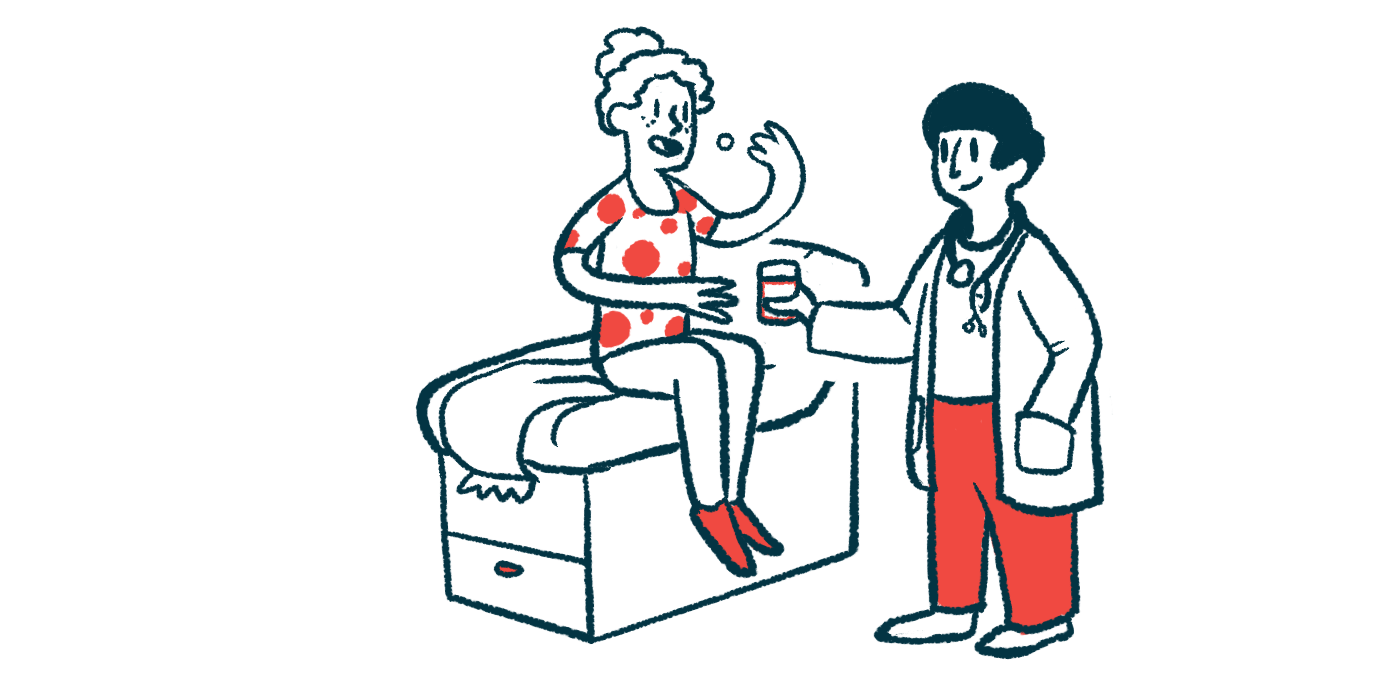Uptravi maintains efficacy up to 1.5 years in real-world analysis
Therapy slows disease progression, reduces risk of being hospitalized for PAH

Most adults with pulmonary arterial hypertension (PAH) experience no worsening and may even see a reduction in the severity of their symptoms after being on treatment with Uptravi (selexipag) for up to about 1.5 years.
That’s according to a new analysis of data from all patients who took part in SPHERE (NCT03278002), a real-world registry of patients who were being treated with Uptravi in routine clinical practice in the U.S.
“The registry … adds important insights into the use of this therapy in clinical practice in a broader population than evaluated in clinical trials,” the researchers wrote.
The analysis was published in the Journal of Heart and Lung Transplantation under the title, “Disease characteristics, treatments, and outcomes of patients with pulmonary arterial hypertension treated with selexipag in real-world settings from the SPHERE registry (SelexiPag: tHe usErs dRug rEgistry).”
Sold by Actelion, part of Johnson & Johnson, Uptravi is approved to slow disease progression and reduce the risk of being hospitalized for PAH, an abnormally high blood pressure in the blood vessels that supply the lungs.
An earlier analysis of data from the first 500 patients enrolled in the Actelion-sponsored SPHERE registry showed that treatment with Uptravi resulted in either no increase or a decline in risk of death over one year.
Now, the researchers report data from all 829 enrolled patients; 759 (91.6%) had a diagnosis of PAH and were the focus of the analysis. The remaining 70 (8.4%) had other types of pulmonary hypertension from World Health Organization (WHO) groups 2 to 5.
Most (76.5%) adults with PAH were women and a median 61 years old when they first started their treatment with Uptravi. Overall, the median time from getting a diagnosis to being started on Uptravi was 2.7 years.
The mean duration of treatment with Uptravi in the overall patient population was 18.7 months, or about 1.5 years.
Uptravi can be used on its own or in combination with other medications, and guidelines recommend it being added to an endothelin receptor antagonist (ERA) and/or a phosphodiesterase type-5 inhibitor (PDE-5i) in patients with WHO functional class II or III.
Functional class refers to the severity of the disease. Class II involves slight limitation of physical activity with no symptoms at rest, whereas class III involves marked limitation of physical activity in daily tasks.
More than half in study had started Uptravi within 60 days of enrollment
While most (80.5%) patients had functional class II or III at baseline, or entry to the registry, more than half (51.9%) were newly started on Uptravi, meaning they had started the therapy no longer than 60 days before enrollment.
Nearly all (94.9%) patients were already taking a medication to treat their PAH prior to being started on Uptravi. About half (49.7%) were taking dual therapy including an ERA, and almost one-third (30.8%) were on single therapy with an ERA, a PDE-5i, or a soluble guanylate cyclase stimulator (a class than includes Adempas).
Not everyone needs the same amount of Uptravi, so each patient has a personal dose based on response to therapy. The median maintenance dose was 1,100 micrograms (mcg) taken orally twice daily, ranging from 100 to 3,200. The median titration (dose adjustment) phase lasted 8.1 weeks.
After 1.5 years of follow-up, most patients had either remained in the same functional class (61.1%) or experienced a reduction in the severity of symptoms (24.9%).
“Similar results were observed in newly and previously initiated patients,” the researchers wrote.
Risk of death at one year decreased from 57.3% to 29.7%
Risk of death at one year was estimated using the REVEAL 2.0 risk calculator. At baseline, over half (57.3%) were at an intermediate or high risk of death, which dropped to 29.7% at 1.5 years of follow-up.
Some 39.4% of patients were hospitalized at least once for PAH, and those at an intermediate or high risk of death were more likely to be hospitalized than those at a low risk.
The survival rate at 1.5 years for people with PAH was 89.4%, and it was higher for those who had been taking Uptravi for more than 60 days than for those who were newly started on Uptravi (94.5% vs. 84.2%).
Over the 1.5 years of follow-up, 22% of all people with PAH stopped taking Uptravi due to side effects. Discontinuation was higher in newly versus previously initiated patients (32% vs. 11.9%).
However, discontinuation due to side effects, time to first hospitalization, or survival were similar regardless of each patient’s maintenance dose of Uptravi.
“Outcomes with [Uptravi] in this real-world study were comparable across maintenance dose strata, with no new safety signals,” the researchers wrote.
These outcomes “reflect the efficacy and safety observed in [Uptravi] clinical trials, presenting the opportunity to maximize therapy earlier than in current real-world practice and in accordance with guidelines.”
A “disconnect between guideline recommendations … and real-world clinical practice … emphasizes a need to address potential barriers to clinical adoption of the current guidelines,” the researchers concluded.








